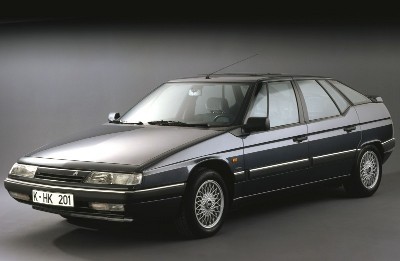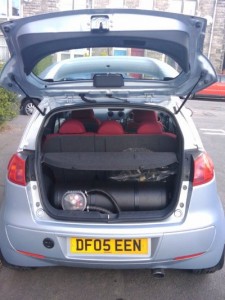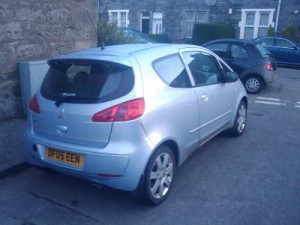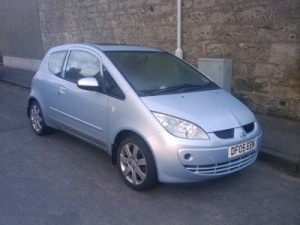I’d like to give my experiences with buying and using an LPG car. The advantages are cheaper fuel and road tax and its better for the environment. Having a conversion has almost no impact on the driveability of the car, although other considerations that must be looked at and the initial cost of conversion is expensive. The intention is to show what considerations should be made if you are thinking about going down this route to see whether its appropriate for you.
Everyone has fond memories of their first car. My car was a 13 year old Citroen XM. The most amazing car that has ever been produced! An ‘executive’ size car, with a 2 litre turbo and Citroen’s amazing Hydractive suspension; pull a lever and the car ride height would actually rise and fall.
The short time I had this car showed me that I needed to consider practicalities when it came to cars, which is when I first heard about LPG.
What is LPG?
I’m sure google can answer this question better than me but what it meant for me is a lower cost fuel alternative for petrol cars. A petrol car can be modified to take LPG (Liquid Petrolium Gas) which is taxed much less than petrol or diesel. Its approximately half price for a litre of petrol.
After consideration I finally bought a Mitsubishi Colt 2005 with a far more reasonable 1.3 litre standard petrol engine. I handed my car in to the garage for a couple of weeks and they fitted the new LPG system. I had a 60 Litre tank fitted but more on that later.
A new tank is required to store the different fuel. This is because LPG is a pressurised gas which must be kept air tight.
We drove to the nearest LPG fuel station to fill up. Upon starting the car, I had a to wait a minute running under petrol, before switching to LPG. This is because the LPG fuel must have perfect operating temperatures, a device called the Vaporizer must warm up before being able to use the fuel. As a result, LPG car conversions are actually duel fuel. They can run both petrol and LPG. This is handy if you run out of LPG and cant find an LPG station.
The filling up process is slightly different from a petrol or diesel car. You have to ‘lock’ in the nozzle to create an air-tight seal, then step back and press a button on the fuel pump to fill up. The fuel only comes out at a standard rate, unlike petrol where more comes out if you squeeze the trigger harder. When the tank is full, you hear a click and the flow automatically stops. This is convenient as it prevents overfilling the tank.
Driving the car has been identical to driving a car before it was converted. The engine sounds exactly the same, has the same power and handles the same. The only difference whilst driving is the indicator on the dashboard to show whether or not LPG is being used in place of petrol.
Petrol still must be used to start the engine each time its switched on, so you need to fill up once in a while, I think I used about 5 litres of petrol in a month. I noticed the LPG fuel indicator is not entirely accurate. It has 4 lights to indicate the amount of fuel left in the car but sometimes I’d start the car and there would be 1 light on (25%) and then it jumps to 2 lights (50%). Because there is only 4 lights, being out by 1 light is very inaccurate. The garage owner taught me the solution to this. Instead of using the gauge, always fill the tank to the maximum and then reset the trip counter on the dashboard. After a few journeys you can get a feel for how far you can drive on one full tank. In my case, I get about 410 miles in my usual every day driving. This has now become my gauge of my fuel, and its actually more accurate than the normal petrol gauge because I am usually accurate to about 5 miles. It is OK to run out of LPG whilst driving. If you do, the car automatically switches back to petrol seamlessly. In fact, the only way you do know is because the indicator on the dashboard beeps at you to tell you! Just don’t run out of petrol.
A Quick tip to save more on the petrol. When the car is started in the mornings, it can be driven straight away as usual, however it takes a minute or so for the LPG to kick in. I have found if I just keep the car parked during that time, I use much less petrol. It also warms the engine just slightly more before driving so should keep the engine in a better state as time goes on. When I fill up on petrol, I only put in about 5 litres, up to about ¼ of the tank. Petrol can go stale if it is not used for a long time so best not to have too much in there. But remember to keep enough such that if you run out of LPG, you can still drive to another fuel station, be that LPG or standard.
Not all petrol stations have LPG, so its important to plan ahead for which station to go to. For me, I discovered 2 stations between my work and home, so I used them. Beware that the prices between stations vary quite dramatically, as much as 10p per litre. This could quickly escalate in lost savings, especially for me considering I used more than 60 litres a week.
Ive had a couple of problems with the car since the installation, these have been a small gas leak outside the car (nothing to worry about, apparently..) and the LPG system stopped working at one point, it had to be repaired. Both times the garage took care of it under warranty and were very quick. The system was fitted by an authorised dealer and I am confident of the safety. There are certificates for the gas tank, installation, and a yearly check must be done on the gas system to ensure safety.
Was it a success?
The reason for my interest was to save money, so Ill break down the costs and savings.
The conversion kit cost was 1750 pounds, so to make things worthwhile I’d have to save that amount of money or more on fuel costs. The class of the car changed for road tax purposes, but that saves only 30 pounds per year.
Because fuel costs are so volatile its difficult to predict how things will go in the future. However, after getting the conversion the savings after were immediately visible at the fuel pump. One litre of LPG cost 57.9p, one litre of petrol was 112.9p. Its not quite as simple as that however, because the miles per gallon is slightly less with LPG. Instead of the 40 miles per gallon I got with petrol, I instead got 35 or so. However, considering the cost difference per litre, I worked out that per mile, LPG costs about 60% as much as petrol.
To put it another way, in order to make the same cost per mile, I would have to have a car which could do about 73 miles per gallon of petrol.
At those fuel prices, I calculated that it would take roughly 40,000 miles to break even on my initial investment. That would take me 2 years of driving to and from work 5 days a week. Considering the car already had 34,000 miles when I first got it, that would take it up to 74,000 which may then make it time to get a another car. So it would appear that I may just about have broken even if I continued to do those journeys for two years.
Overall I would see this experiment as an interesting one, albeit not quite a financial success in my case. It is true that savings are there to be made, but it is over a long period of time and there is the considerable investment cost at the start. In addition, I no longer have a boot! This isnt a problem for me, as I just put shopping and luggage on the back seats. However this may not be a solution for everyone. The gas tanks come in different sizes and depending on the size of the car, you can get an appropriately sized tank which gives you the range you need and leaving enough boot space. These are custom installations which can be fine tuned to your particular requirements.
To surmise, I would recommend doing the facts and figures on having an LPG conversion before taking the plunge. Usability-wise, there are only a few settling-in issues but they have been taken care of now. Actually driving the car itself is identical to driving before. I must admit it is a good feeling going to the station and filling up for half the price as the average driver.
In my personal situation, I needed to have a car with a long driving range, and didn’t need a boot, so thats why I chose a large tank in a small car. These sorts of decisions can be made per individuals personal circumstances.
I’ve heard from the garage owner that people with larger cars tend to go for LPG conversions more, as their miles per gallon is typically low, they make comparatively larger savings. Also, the performance is retained on the engine.
Driving LPG is certainly a viable alternative, and over time the advantages can be seen. And you can take pride that you are doing your little bit to save the environment 🙂 Of course, the real savings come from not having to drive at all, but that if course is dependant on your own circumstances. For me, I don’t fancy cycling 100 miles a day, and public transport is more than twice the price and takes twice as long.




